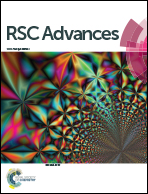Anti-tumor effect of HOTAIR–miR-613-SNAI2 axis through suppressing EMT and drug resistance in laryngeal squamous cell carcinoma
Abstract
Laryngeal squamous cell carcinoma (LSCC) is the main pathological type of laryngeal cancer, which attacks the head and neck. Our present study aims to investigate the effect of long non-coding RNA (LncRNA) HOX transcript antisense RNA (HOTAIR) on epithelial mesenchymal transition (EMT) and drug resistance in LSCC. Firstly, the level of HOTAIR was found to be overexpressed in LSCC tissues compared with normal healthy tissues. Then, increased EMT and drug resistance were suppressed by specific HOTAIR shRNA effectively in LSCC cell lines. Besides, miR-613 was predicted to be a target of HOTAIR through bioinformatics analysis. Meanwhile, we found that a down-regulated level of miR-613 could be increased by HOTAIR shRNA and suppressed by LncRNA HOTAIR transfection in LSCC cells. The targeting relationship between miR-613 and HOTAIR was further demonstrated by a luciferase report assay. What is more, the inhibiting effect of HOTAIR shRNA on EMT and drug resistance was obviously abolished by the miR-613 inhibitor. Moreover, SNAI2, a critical regulator of EMT, was predicted as a target of miR-613 through bioinformatics analysis and luciferase report assays. As expected, the level of SNAI2 could be suppressed by HOTAIR shRNA and increased by the miR-613 inhibitor. Additionally, we discovered that SANI2 shRNA had similar inhibiting effect on EMT and drug resistance with HOTAIR shRNA in LSCC cells. Finally, the in vivo experiment further demonstrated that HOTAIR shRNA restricted tumor growth, EMT and drug resistance. Additionally, HOTAIR shRNA transfection could also increase the level of miR-613 and decrease the level of SNAI2 in vivo. Taken together, our research for the first time revealed the effect of the HOTAIR–miR-613-SNAI2 axis on EMT and drug resistance in LSCC, providing new targets for LSCC diagnosis and treatment.



 Please wait while we load your content...
Please wait while we load your content...